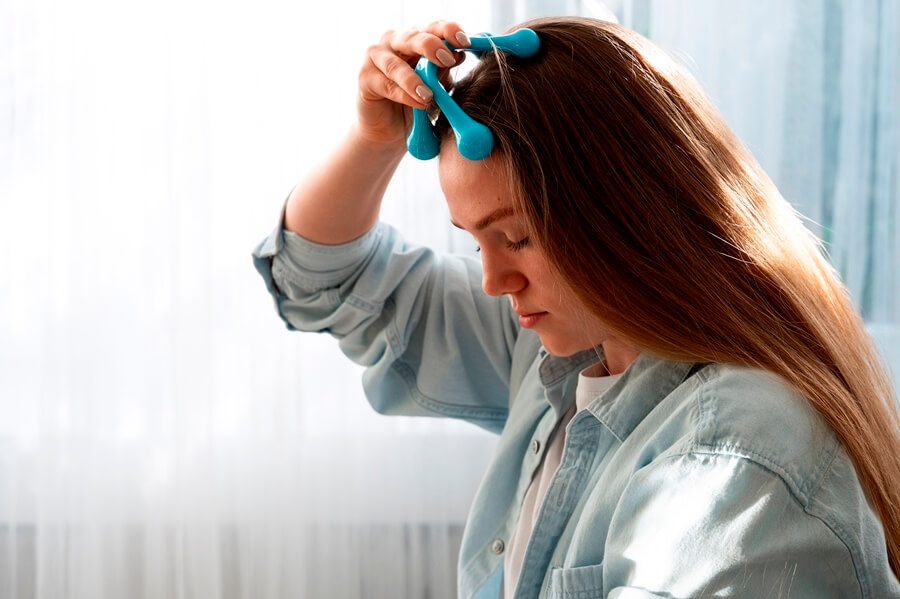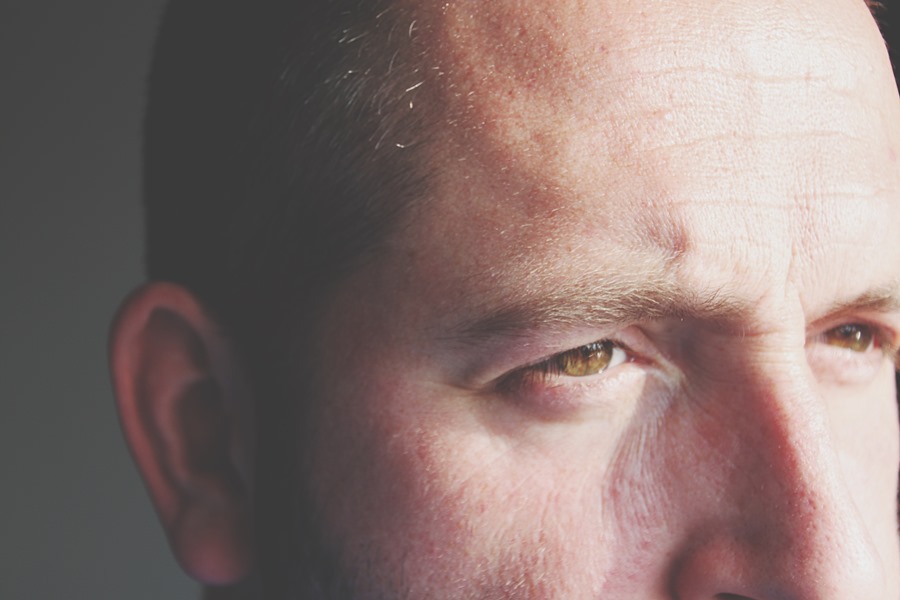When researching treatment options for mental health or substance use disorder (SUD), you may have come across transcranial magnetic stimulation (TMS).
TMS is a non-invasive treatment option that can deliver magnetic pulses to targeted areas of the brain. This targeted stimulation is thought to activate nerve cells in regions where their activity isn’t functioning as it should be.
For instance, when someone struggles with depression, nerve cells in the prefrontal cortex tend to have decreased activity. The prefrontal cortex plays a big role in regulating mood, which is why lower activity here would cause someone who’s depressed to feel down or have less energy. Therefore, stimulating that region to speed up activity could help someone feel better.
TMS is approved by the FDA to treat depression, anxiety, obsessive-compulsive disorder (OCD), and smoking cessation. It’s also been reviewed in studies for SUD treatment with promising results, but more research is still needed before it can be approved for SUD.
While many studies show that TMS is promising and even effective for treating certain conditions, there are still adverse effects that can happen, such as headaches, scalp discomfort, and drowsiness. To help you make an informed decision, we’ll review both the good and bad of TMS in the rest of this article.
Mechanism of Action
As mentioned, TMS sends magnetic pulses through targeted areas of the brain. These pulses are meant to stimulate nerve cells in areas that have abnormal activity that can cause mental health or behavioral disorders to occur.
This is a non-invasive treatment method, so no surgery or incisions are required. During treatment, patients wear a helmet that covers the skull. The helmet has electric coils attached that send magnetic pulses through the device.
Treatment is generally pain-free, but about 20-40% of patients report scalp discomfort, which is one of the main side effects.
Regions of the Brain Targeted When Treating Different Conditions
To give you more details about TMS’s mechanism of action, let’s review which areas of the brain are usually targeted during TMS therapy sessions.
- Depression: As mentioned earlier, the prefrontal cortex is the main area of the brain where activity slows when someone struggles with depression. This is located right behind the forehead, so magnetic waves will be focused on the front of the brain during TMS treatment for depression.
- Anxiety: When someone struggles with anxiety, activity in the amygdala tends to speed up when someone is under stress. The amygdala triggers your fight-or-flight response. It’s located in the temporal lobe, which is in the middle of the brain near the skull’s base.
- Obsessive-compulsive disorder (OCD): The main circuits in the brain that have abnormal activity when someone has OCD are the orbitofrontal cortex (OFC), anterior cingulate cortex (ACC), striatum, and thalamus. These are all located at the back of the brain and play a big role in habit formation.
- Substance use disorder (SUD): Someone who struggles with SUD will commonly have abnormal activity in the prefrontal cortex (front of the brain), amygdala (center of the brain), and ganglia (top of the midbrain). These coordinate things like mood, emotional regulation, and motor control.
Common Adverse Effects Reported in Clinical Studies
While TMS can be beneficial, there are also common side effects reported with it. As mentioned earlier, its main side effects are headache and scalp discomfort, with approximately 20-40% of patients experiencing it.
There have also been reports of patients who experienced tingling, facial muscle twitching, dizziness, and drowsiness or fatigue. Most of these symptoms seem to go away after TMS treatment stops and may subside within a few hours to a few days after a session.
If you experience any side effects during treatment, you should let your doctor or care provider know as soon as possible so they can assess the situation.
How TMS Can Ruined Your Life in Case Reports
One of the most serious side effects reported as a result of TMS treatment is seizures. These are usually rare, occurring approximately 0.1-0.6% of the time. That said, it’s still important to be aware of this risk before undergoing treatment.
Generally, studies show that seizures are most common in patients who have a history of head injuries or who undergo aggressive treatment with frequent TMS sessions.
There was one case study where a 19-year-old female experienced a seizure after her 7th treatment session. However, she was categorized in a higher-risk group for seizures. Therefore, treatment professionals administering TMS therapy should pay close attention to patient risk factors before treatment.
There was also another case report where a patient receiving treatment for major depressive disorder experienced a seizure during their third session. It was noted that the patient was receiving accelerated treatment with frequent sessions, which was likely the main cause. Therefore, paying attention to session frequency is important.
Risk of Mood Changes
The other serious risk with TMS treatment is the potential for adverse mood changes. Particularly in some rare cases, patients have experienced increased depression or increased anxiety after treatment.
There was also a case report where a 55-year-old man experienced symptoms of mania and psychosis after starting TMS treatment. The patient was hospitalized and stopped TMS when symptoms began. After discontinuing TMS, his symptoms improved, showing that it was the main cause.
Management of Adverse Effects
When patients experience side effects from TMS, treatment professionals must apply the right protocols to safely manage symptoms.
Typically, when patients experience headaches and scalp discomfort, it may be alleviated with over-the-counter pain relievers like Tylenol or Ibuprofen. Reducing the frequency of TMS sessions can also help manage symptoms.
More serious side effects like seizures should be managed by immediately discontinuing TMS treatment. Patients should also get immediate medical attention and an analysis to ensure safety after a seizure happens.
Healthcare teams should also regularly monitor patients when they’re undergoing TMS treatment. Any signs that they might be responding poorly or that they might have common risk factors, like a history of head injuries, should be reported and managed.
Alternative Neuromodulation Therapies
When you’re researching treatment options for mental health or SUD, there are other alternative neuromodulation therapies similar to TMS that could be options to consider.
Transcranial Direct Current Stimulation (tDCS)
Transcranial direct current stimulation (tDCS) works similarly to TMS. It’s a non-invasive technique that sends low-level electrical currents to alter abnormal brain activity.
tDCS is less intense than TMS and can even be done at home using a portable machine. Some studies even note that tDCS may be safer than TMS due to the lower intensity of the electrical currents used. That said, tDCS is still new, so more research is needed to confirm its effectiveness and safety.
Electroconvulsive Therapy (ECT)
Electroconvulsive therapy (ECT), also known as electroshock therapy, is a psychiatric treatment method that uses a brief electric current to cause a controlled seizure in the brain. This is a more intense treatment option than TMS and is generally only used for patients with severe symptoms where other treatment options haven’t been effective.
Since ECT is more intense, it usually has more side effects, requires a longer recovery time in a hospital after sessions, and costs more.
Other Alternative Treatment Options
Generally, neuromodulation therapies are only recommended when other treatment options are ineffective. Therefore, starting with options like therapy, support groups, and medications is usually recommended before going this route.
Seeking treatment at a rehab center for substance use or mental health is often a great place to start. Here, treatment professionals can provide a full diagnosis and give you around-the-clock medical attention as you recover. That’s especially important when recovering from substance abuse when withdrawal symptoms may occur during detox.
Conclusion
While TMS treatment can be effective when treating more serious conditions, it isn’t right for everyone. It’s important to discuss this option thoroughly with your doctor and have them run a full assessment to determine if it’s right for you. If you experience any side effects during treatment, it’s also important to inform your doctor immediately.
It’s also important to note that TMS isn’t yet approved by the FDA to treat substance abuse. If you’re looking into the right SUD treatment options, our Genesis House Rehab team can help. We’re a dual-diagnosis drug and alcohol treatment center that provides medical detox and residential care options.
Our team is ready to help you find a tailored program that fits your needs. You can contact us today to learn more.
References
- Cohen, Samantha L., et al. “A Visual and Narrative Timeline of US FDA Milestones for Transcranial Magnetic Stimulation (TMS) Devices.” Brain Stimulation, vol. 15, no. 1, Jan. 2022, pp. 73–75, doi:10.1016/j.brs.2021.11.010. https://pmc.ncbi.nlm.nih.gov/articles/PMC8864803/
- Gorelick, David A., et al. “Transcranial Magnetic Stimulation in the Treatment of Substance Addiction.” Annals of the New York Academy of Sciences, vol. 1327, no. 1, July 2014, p. n/a-n/a, doi:10.1111/nyas.12479. https://pubmed.ncbi.nlm.nih.gov/25069523/
- Peterchev, Angel V., et al. “Pulse Width Affects Scalp Sensation of Transcranial Magnetic Stimulation.” Brain Stimulation, vol. 10, no. 1, Jan. 2017, pp. 99–105, doi:10.1016/j.brs.2016.09.007. https://pmc.ncbi.nlm.nih.gov/articles/PMC5241181/
- “Sarah H. Lisanby: Transcranial Magnetic Stimulation Safety and Risk.” National Institute of Mental Health (NIMH), https://www.nimh.nih.gov/news/media/2020/sarah-h-lisanby-transcranial-magnetic-stimulation-safety-and-risk
- Loo, Colleen K., et al. “A Review of the Safety of Repetitive Transcranial Magnetic Stimulation as a Clinical Treatment for Depression.” International Journal of Neuropsychopharmacology, vol. 11, no. 1, Feb. 2008, pp. 131–147, doi:10.1017/s1461145707007717. https://academic.oup.com/ijnp/article/11/1/131/647218
- Mikellides, Georgios, et al. “TMS-Induced Seizure during FDA-Approved Bilateral DMPFC Protocol for Treating OCD: A Case Report.” Case Reports in Neurology, vol. 13, no. 3, 9 Sept. 2021, pp. 584–590, doi:10.1159/000518999.






